What Berries Grow in the Forest
When summer comes, you can find berries in forests. But not all the berries you find can and should be eaten.
Together with 5-Minute Crafts, you will find out what edible forest berries there are and where to find them.
Wild strawberry
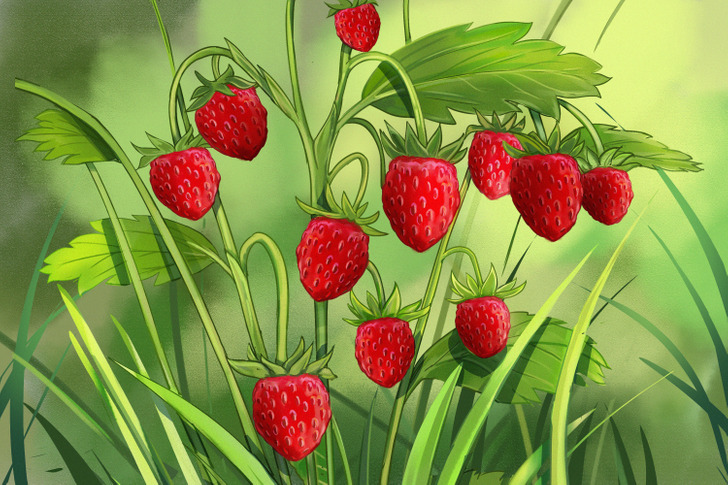
What it looks like:
The wild strawberry is a low-growing, deciduous herbaceous plant that stands 2-8 inches tall. The leaves are trifoliate, green on the outside, pale-green and dipped on the inside. Each part of the leaf is egg-shaped with serrated edges. The flowers are around 0.2 inches in diameter, with 5 white petals and a yellow middle part. The berries are green at first and bright-red later, egg-cone shaped, with small seeds on the surface.
Where it grows:
It’s often seen in meadows, open slopes, forest margins, forests, trails, and clearings.
When to collect:
The blooming period occurs in late spring and continues to the middle of summer. The berries appear in June-July.
Cranberry
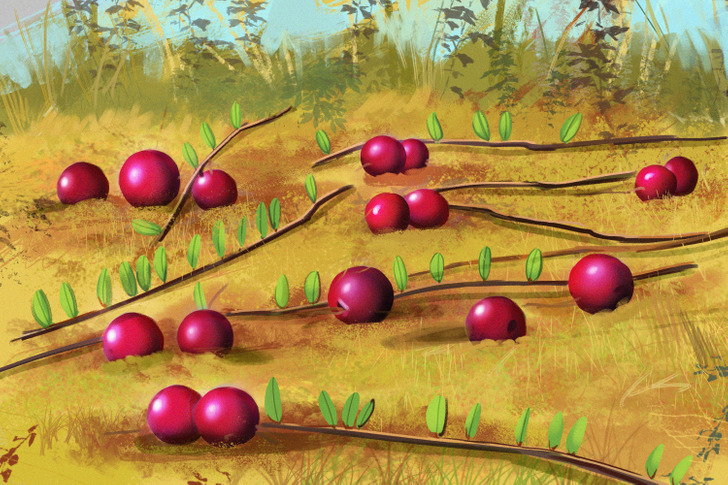
What it looks like:
The cranberry is an evergreen dwarf shrub with trailing vines, 2-8 inches tall. The leaves are small, ever-green, and oval or elliptical in shape. The upper part of the leaf is dark green, smooth, and shiny, and the lower part is pale green with a white waxy layer. The flowers are small and look like 4-leaf bells. The berries are round, dark-red, and sour.
Where it grows:
It can be found in swamps and humid forests and prefers poor, sour soils.
When to collect:
The blooming period is from June through August. The berries can be collected from October to December.
Lingonberry
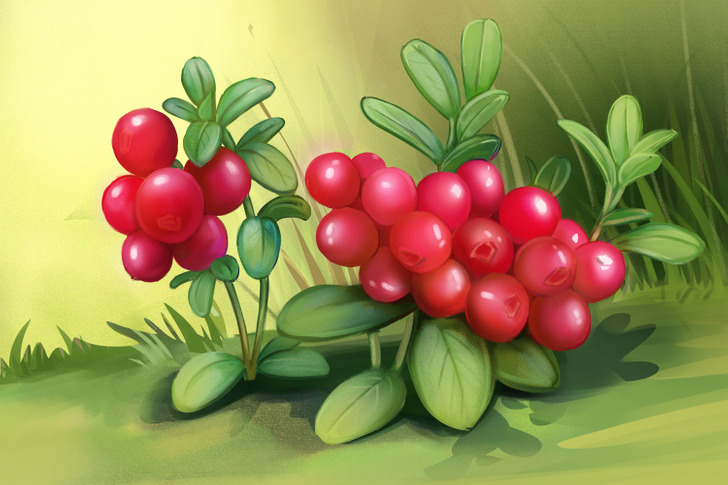
What it looks like:
The lingonberry is a short subshrub about 2 to 6 inches with small, oval, thick, green leaves. The flowers look like small white-pink bells and come in bunches, and the berries are red, not very big, from 1⁄4—3⁄8 inches across, also in bunches. They taste bitter-sour and get sweet when they’re ripe.
Where it grows:
It grows in poorly developed mineral soils and peats. It can also be found found in forests, swamps, hilly areas, and windswept crags.
When to collect:
The blooming period is from May to June, and the berries appear from August to October.
Bilberry
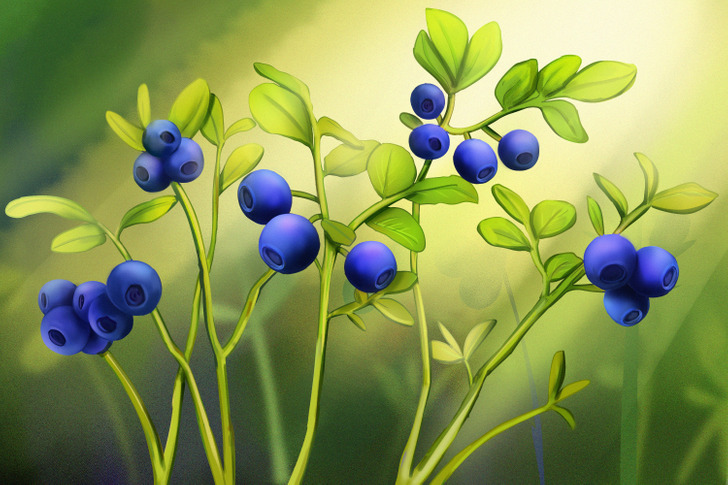
What it looks like:
The bilberry is a perennial shrub growing up to 4 to 16 inches with egg-shaped bright green leaves that go red in fall. The flowers are bell-shaped, they have red, yellow, or green colors or a combination of those. The berries are ball-shaped with a flat top. They are dark, almost black, with a blue-purple shade. The flesh is dark red with a strong flavor and a rich sweet-sour taste.
Where it grows:
The plant grows wild in forests and meadows and on heathland and moors and requires a moist but freely-draining lime-free soil.
When to collect:
Blooming is from May to July, and the berries appear in the middle or the end of summer.
Elm leaf blackberry
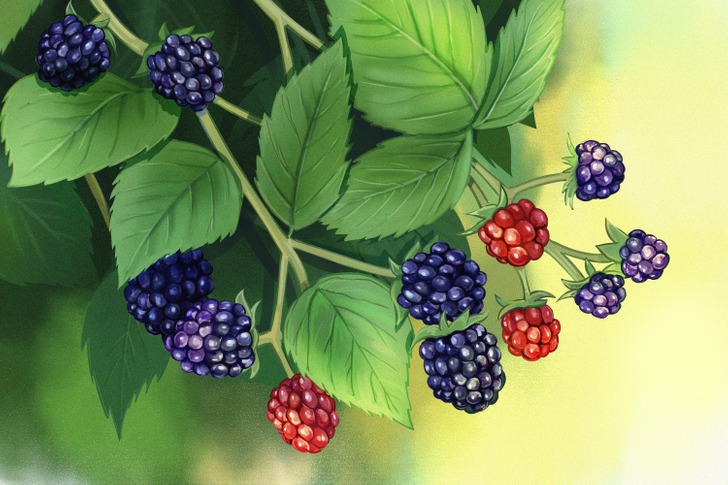
What it looks like:
The elm leaf blackberry is a brambly spreading shrub that can grow almost 17 feet tall. The stems are interlacing, around 2 inches long. They might have spines. The flowers are around 1 inch in diameter with 5 white or pale pink petals. The berries are sweet, up to 1 inch in width and length, made up of approximately 20 to 50 single-seeded drupelets. When they are unripe, they are straw color or red and become black when the fruit is ripe.
Where it grows:
The plant can be seen in forests, swamps, or near water, on the sides of streams, forests, and even near roads. This plant prefers well-drained humid, acidic or basic soils.
When to collect:
The elm leaf blackberry blooms in July, and the berries appear in August-September.
Raspberry
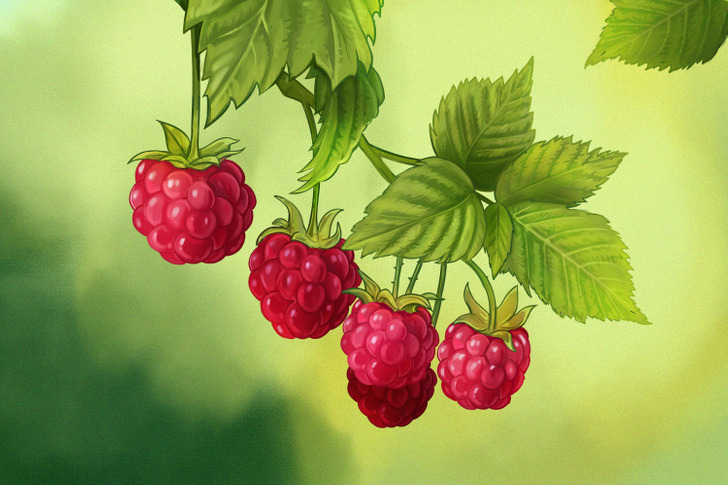
What it looks like:
The raspberry is a shrub 3-6 feet tall with imparipinnate elongated leaves of 1-3 inches. The flowers are white with 5 petals. The berries are round, up to 1 inch in diameter, made up of around 100 drupelets, and are very sweet.
Where it grows:
Raspberries often grow in places after forest fires or deforestation. They prefer well-drained soil with enough organic chemicals.
When to collect:
Raspberries usually bloom from June to August, and soon after blooming, the berries appear and are ripe.
Blueberry
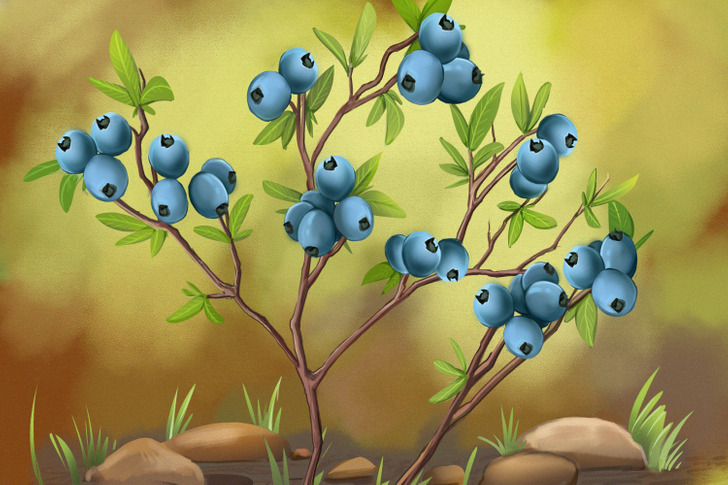
What it looks like:
Blueberries can grow both on short shrubs up to 4 inches and on tall shrubs of 13-16 feet. The leaves are egg-shaped or elliptical, 0.3-3 inches. The flower buds are egg-shaped, red, and pointed, and the flowers themselves are white or pale pink, sometimes with a green shine. The ripe fruits are dark purple with a small crown at the end, with white plaque. They can be 0.2-0.6 inches in diameter, growing in bunches. Ripe blueberries have light-green flesh and a sweet taste with a bit of sourness.
Where it grows:
Blueberries don’t like thick shade, which is why it grows in open forest lands with wet, sour, well-saturated soil.
When to collect:
Blueberries usually ripen from June to August.
Stone bramble
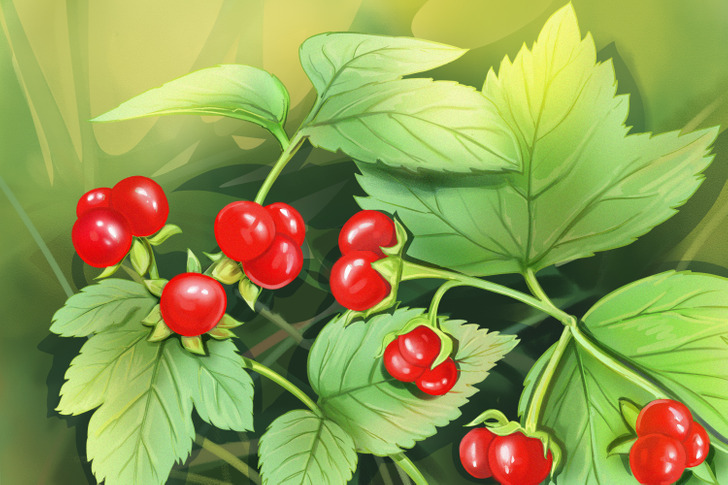
What it looks like:
The stone bramble has stems as long as 7 to 23 inches, consisting of 3 parts. The inflorescence is a few-flowered corymb. Each flower has 5 narrow white petals. The berries are red, ball-shaped with a big pit inside, and sour.
Where it grows:
It grows in stony woods and by shady rocks, especially on basic rocks. It prefers moist, well-drained soil: light (sandy), medium (loamy) and heavy (clay).
When to collect:
It blooms from June to August, and the berries are ripe from July to September.
Cloudberry
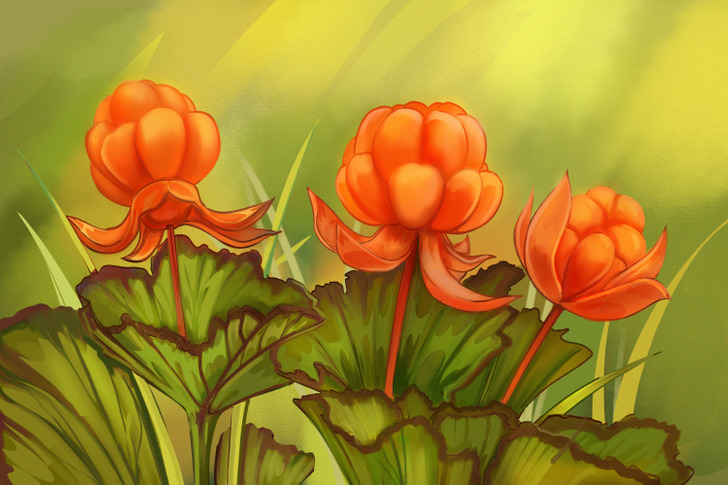
What it looks like:
The cloudberry is a small plant with stems of 1.5-7 inches with round red leaves. The white (sometimes reddish-tipped) flowers have 4-5 white petals. The berries are 5 and 25 drupelets and are orange, red-orange, or amber in color once they are ripe.
Where it grows:
The cloudberry grows in swamps, wet meadows, tundras, and peatlands. It loves acidic soil.
When to collect:
Cloudberries bloom from June to August and ripen in early fall.
Rose hip
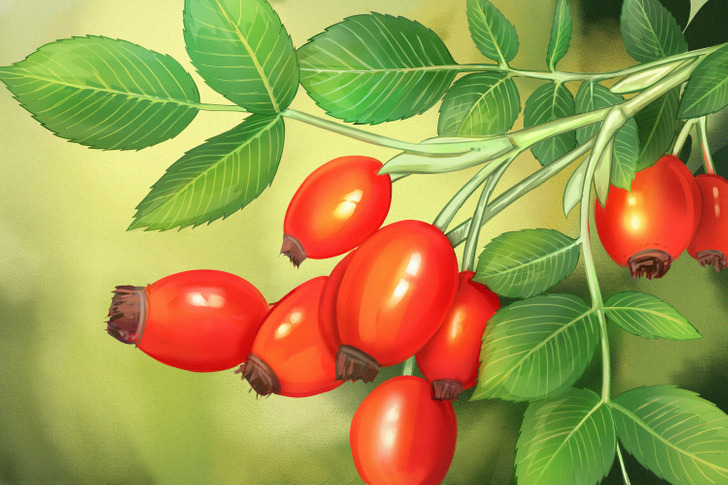
What it looks like:
Rose hip is a perennial shrub capable of growing up to 5 feet with sharp spines. It has 3-11 complex, pinnate, elliptical ovoid leaves. They may be pink or white and are 1.5-2 inches in diameter. The berries are oval, from orange to red.
Where it grows:
The shrub grows in the warm and temperate climates of the Northern hemisphere, steppe lands, forests, and ravines.
When to collect:
Rose hips begin to form after the pollination of flowers in spring or early summer, and they ripen in late summer through autumn.